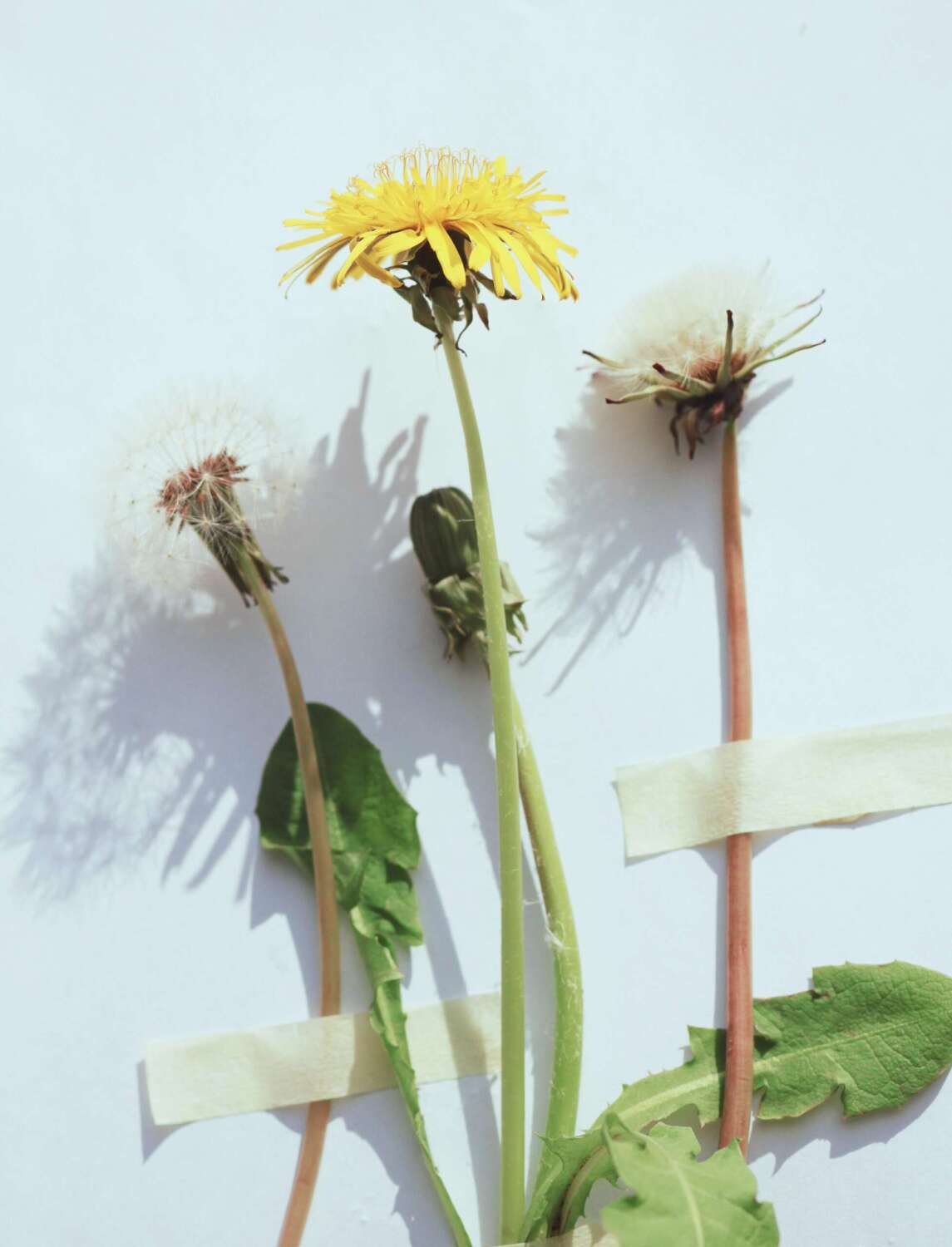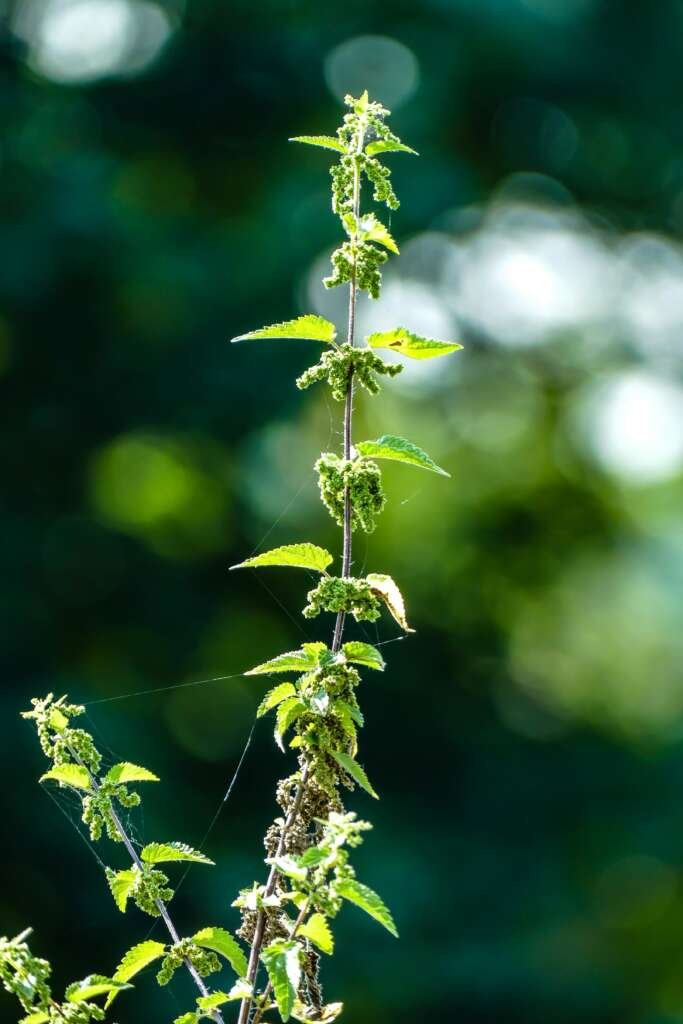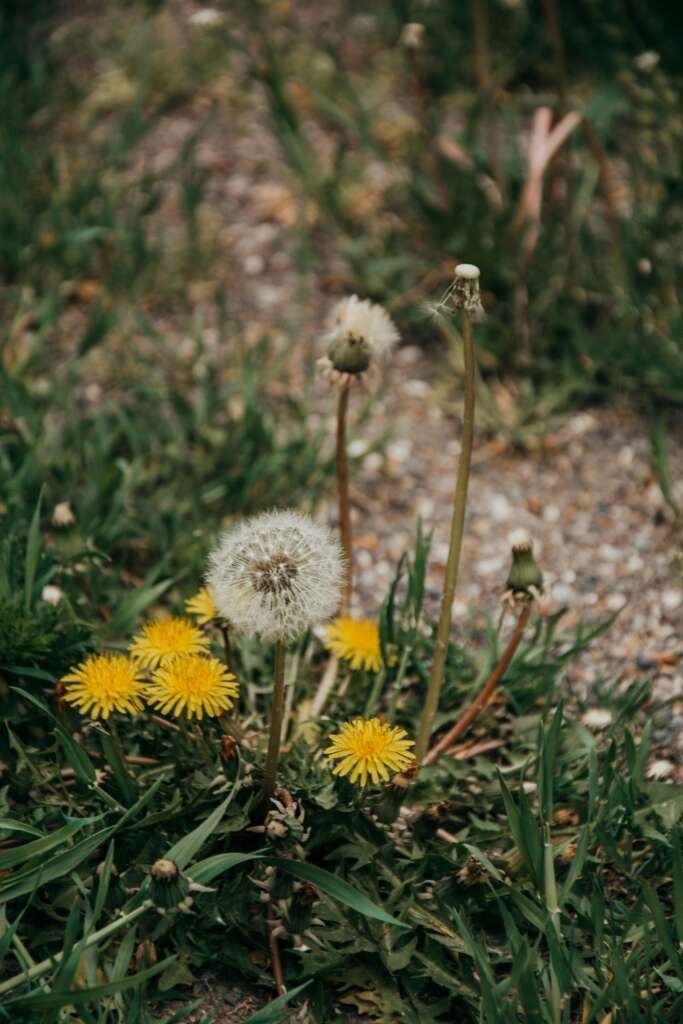Do You Really Need To Weed Your Garden?

Share This Article
The short answer is “no”. It’s time to embrace a weed garden. A scientist reveals the surprising benefits of nature’s overlooked plants.
| All products featured on The Wellness Feed are independently selected by our editors for their environmental and ethical impact. However, we may earn an affiliate commission when you buy something through our retail links. |
Is it time to start embracing a weed garden? From being pollinators for butterflies and bees to pulling up nutrients and moisture to the topsoil for other plants, weeds have their place in the world of gardening. And think about how much time you’d have to sit back and enjoy your garden versus digging up tough roots. So, why don’t we embrace weeds more often?
For centuries, weeds have been known as pesky plants that invade our yards and gardens and compete with our favorite flowers and veggies. For farmers and crop-growers, they can be pesky. Eric Vukicevich, an agricultural scientist and educator, at Connecticut College theorizes that our modern idea of weeds was mostly likely shaped by early farmers. “Early farmers began selecting for the most productive and nutritious plants to use as food there were other plants that interfered with this task,” he explains. “So over time… plants that thrive in these conditions but don’t provide consistent, predictable food yield results are certainly a nuisance.”
But for hobby gardeners who aren’t cultivating a garden for food, these plants can play a vital role in supporting local ecosystems.
Changing this age-old stigma can promote biodiversity, which is a powerful defense against climate change, support your soil health, and even provide you with nutrients when tossed in salads or brewed into a tea. It’s time to look at weeds with new eyes and discover their hidden value.
Benefits of Weeds

Understanding what weeds are is the first step to understanding the benefits of cultivating a weed garden. It’s as Eric explains, “You will see many different definitions of what weeds are, including a “plant out of place.” One of his favorite definitions come courtesy of researcher Mark Schonbeck, who wrote, “A weed is any plant not intentionally sown or propagated by the grower.” By that definition, any tree or plant you haven’t planted is a weed.
Other characteristics of weeds are their hardiness. Eric explains. “Fast growth, prolific seed production and short time to seeding, seed dormancy mechanisms, and the ability to thrive in disturbed soil,” are a few common weed traits. These traits might be annoying for gardeners trying to grow specific plants. But these same traits also allow weeds to thrive in adverse conditions and continue to provide ecosystems with the benefits of plants.
“There are some winter annual weeds like chickweed that provide good soil cover in the instance you didn’t cover the bed with mulch or a cover crop,” Eric says. However, if you want to grow a cool-season crop like fall Spinach, it will be overtaken by weeds. Understanding these native plants is essential to understanding how to cultivate a thriving garden.
All plants provide the soil with nutrients, whether or not they are a weed. “Living roots in soil feed the soil food with carbohydrates captured from photosynthesis, Eric says. “Plants that have fibrous roots like grasses are great at building soil organic matter due to high production of many fibrous roots that are constantly dying and growing.”
Weeds can also signal the health of the soil in your garden, Eric shares. “Weeds can tell us that our garden soil contains weed seed, which can last up to a decade or more for some species. If your garden soil is very fertile, some species can produce up to 100,000 seeds per plant!” That’s because weeds improve soil quality by preventing erosion and helping to recycle nutrients. Their roots break up compacted soil, making room for other plants to grow. Some weeds are nitrogen fixers, meaning they add this essential nutrient to the soil naturally. They also help restore degraded land, making them valuable allies in ecological restoration projects.
Weeds also provide food for bees, butterflies, and beneficial insects. Blue violets, Dutch white clover, and dandelions are a few weeds commonly seen on lawns that are visited by bees and butterflies for their pollen. And many weeds bloom at times when few other plants do, giving pollinators food during scarce seasons. They also offer habitat and shelter for small insects and wildlife. Dandelions have a dual purpose, as they are also used by hummingbirds for their nests.
Several weeds contain trace amounts of vitamins, minerals, and antioxidants. “I like to eat dandelions, chickweed, purslane, and lambsquarters,” Eric says. Dandelions are rich in vitamin A, C, and K, and contain more calcium and potassium than some store-bought greens. Purslane, often found growing on sidewalks, has a lot of omega-3 fatty acids and antioxidants. Nettles are loaded with iron, calcium, and vitamin C, making them a perfect addition to your diet once cooked. Lamb’s quarters, a wild green, offers more iron and calcium than spinach.
Misinformation can lead to dangerous mistakes. Learning to identify edible weeds correctly is crucial. Use reputable guides, local workshops, and trusted online resources. Avoid plants with similar toxic varieties, and always confirm before eating.
Managing Your Weed Garden

“Gardeners can let some weeds be part of their unmanaged areas around the garden or as part of their lawn,” Eric states. “Some dandelions, clover, or deadnettle is not a problem in a lawn where you can mow, plus they feed the bees.” If you’re not quite ready to fully give up your perfectly curated garden, you can begin with small patches here and there. “But if you want a visually neat garden, you should probably have a plan to keep weeds from being successful there such as using tools to shallowly cultivate around garden plants, using organic mulches like straw, non-seedy lawn mowings, seaweed, or wood chips, or reusable landscape fabric.”
Eric also offers tips for managing weeds without harsh chemicals. “Besides the obvious pulling, cultivating, I’d say think about smothering using heavy mulch, cardboard, tarps, etc. If you have patience, you can do a lot by eliminating their access to light,” he suggests. Replacing chemicals with natural weed management methods benefits the environment. Embracing certain weeds reduces reliance on herbicides, which can harm soil and water quality. Encouraging weed diversity in gardens and farms supports a balanced ecosystem and healthy soil.
Should I Have A Weed Garden?
Weeds are packing more than just trouble—they’re a treasure trove of nutrition, ecological support, and medicinal properties. Instead of battling them, consider how they can serve your health and the environment. Weeds are affordable, accessible, and often overlooked superfoods, ready to boost your well-being. Why not take a moment to explore your local weeds? They could become your new health allies and ecological allies for a more sustainable lifestyle.
